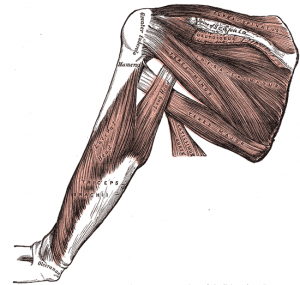http://www.physiospot.com/research/self-managed-loaded-exercise-versus-usual-physiotherapy-treatment-for-rotator-cuff-tendinopathy/
Self-managed loaded exercise versus usual physiotherapy treatment for rotator cuff tendinopathy
SEPTEMBER 30, 2013 BY
- See more at: http://www.physiospot.com/research/self-managed-loaded-exercise-versus-usual-physiotherapy-treatment-for-rotator-cuff-tendinopathy/#sthash.f9Y7NrC8.dpufhttp://www.ncbi.nlm.nih.gov/pubmed/23954024
Physiotherapy. 2013 Aug 14. pii: S0031-9406(13)00059-X. doi: 10.1016/j.physio.2013.06.001. [Epub ahead of print]
Self-managed loaded exercise versus usual physiotherapy treatment for rotator cuff tendinopathy: a pilot randomised controlled trial.
Source
School of Health & Related Research, University of Sheffield, Regent Court, 30 Regent Street, Sheffield S1 4DA, UK. Electronic address: c.littlewood@sheffield.ac.uk.
Abstract
OBJECTIVES:
Rotator cuff tendinopathy is a common source of shoulder pain characterised by persistent and/or recurrent problems for a proportion of sufferers. The aim of this study was to pilot the methods proposed to conduct a substantive study to evaluate the effectiveness of a self-managed loaded exercise programme versus usual physiotherapy treatment for rotator cuff tendinopathy.
DESIGN:
A single-centre pragmatic unblinded parallel group pilot randomised controlled trial.
SETTING:
One private physiotherapy clinic, northern England.
PARTICIPANTS:
Twenty-four participants with rotator cuff tendinopathy.
INTERVENTIONS:
The intervention was a programme of self-managed loaded exercise. The control group received usual physiotherapy treatment.
MAIN OUTCOMES:
Baseline assessment comprised the Shoulder Pain and Disability Index (SPADI) and the Short-Form 36, repeated three months post randomisation.
RESULTS:
The recruitment target was met and the majority of participants (98%) were willing to be randomised. 100% retention was attained with all participants completing the SPADI at three months. Exercise adherence rates were excellent (90%). The mean change in SPADI score was -23.7 (95% CI -14.4 to -33.3) points for the self-managed exercise group and -19.0 (95% CI -6.0 to -31.9) points for the usual physiotherapy treatment group. The difference in three month SPADI scores was 0.1 (95% CI -16.6 to 16.9) points in favour of the usual physiotherapy treatment group.
CONCLUSIONS:
In keeping with previous research which indicates the need for further evaluation of self-managed loaded exercise for rotator cuff tendinopathy, these methods and the preliminary evaluation of outcome offer a foundation and stimulus to conduct a substantive study.
Copyright © 2013 Chartered Society of Physiotherapy. Published by Elsevier Ltd. All rights reserved.
KEYWORDS:
Exercise, Quality of life, Randomised controlled trial, Rehabilitation, Rotator cuff tendinopathy
- PMID:
- 23954024
- [PubMed - as supplied by publisher]


No hay comentarios:
Publicar un comentario